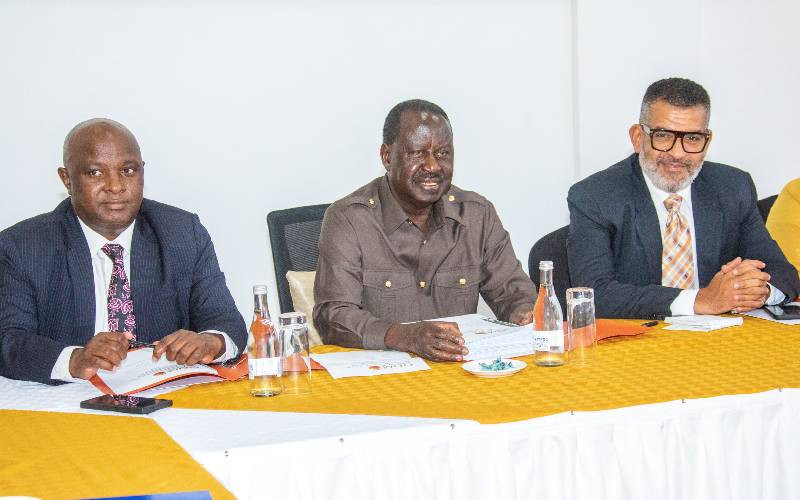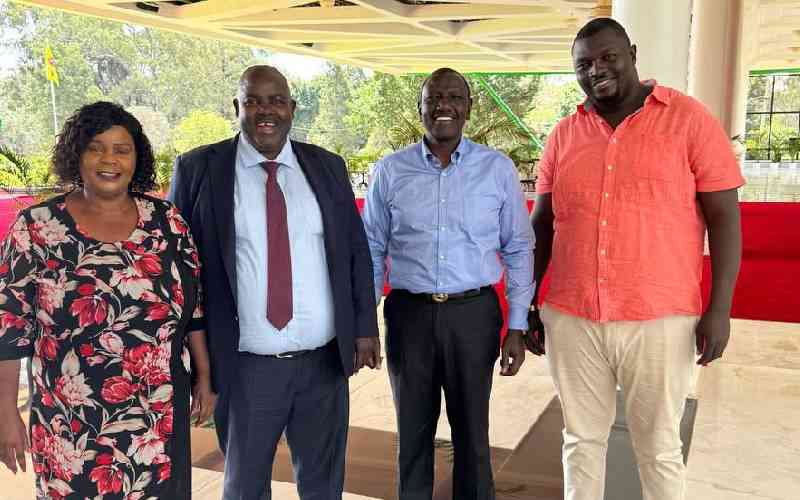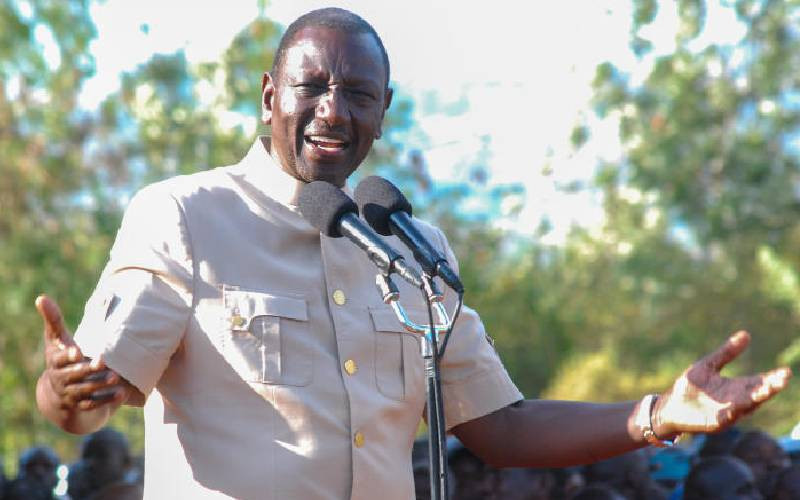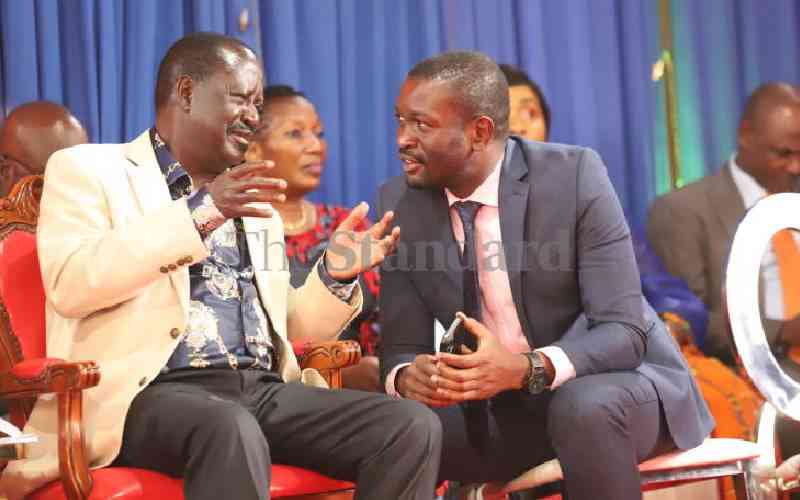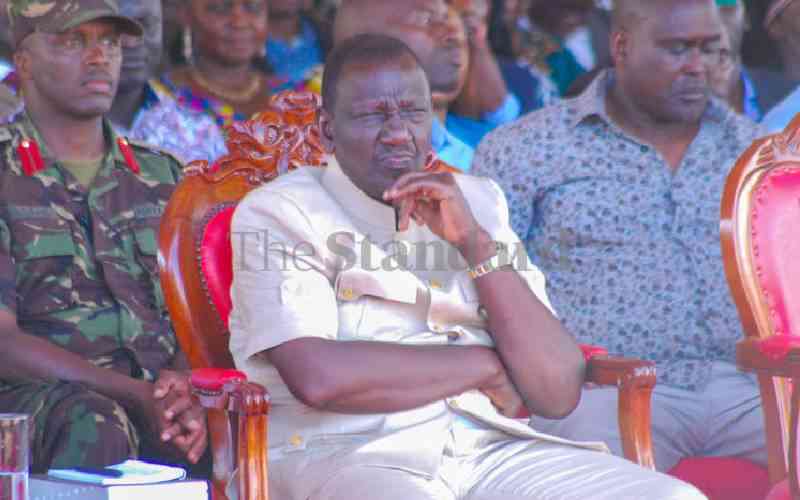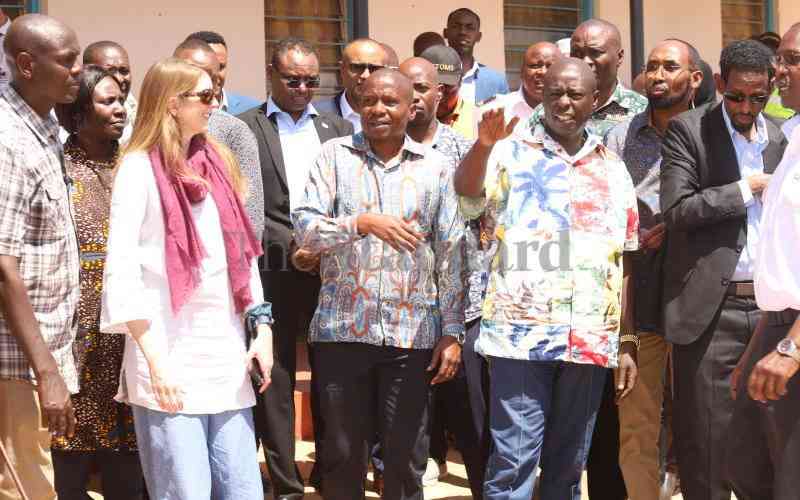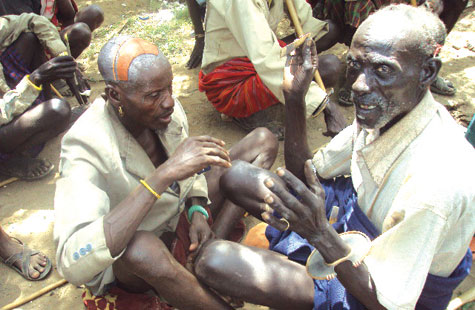 |
|
Specialised barbers shave and decorate the hair during the initiation into adulthood. [photos: maureen odiwuor/Standard] |
By Maureen Odiwuor
John Ekamais, 26, has been thirsting to tie the knot with his wife of two years not for any other reason, but to earn respect among his peers and become an elder.
He is among the few Turkana embracing tradition and modernity judging from his dress code. He is wearing a red Manchester United T-shirt and Jeans. Still, he believes in the culture of hair shaving, which signifies maturity after one pays bride price.
Ekamais, who lives near the Kakuma Refugee Camp, says he wants to follow requirement to make his married culturally acceptable.
Reasons for the hairdo
“Nilioa mke wangu kwa njia ya town, lakini lazima nifanye harusi ya kitamaduni kwao ndiyo ninyolewe emedot” (I married in town, but I must do a traditional wedding so that I can be allowed to have the cultural hairdo), he says.
He says wants the hairdo for cultural and aesthetic purposes.
“Even when one is married, you are considered a child because we shave our hair clean,” he says.
This, Ekamais says, demeans men and they are usually urged to marry traditionally to earn respect from women, children and other young men who shave their hair clean with no decorations.
He says he cannot attend any major functions where there are elders.
Lokosen Nyangatom, 55, a traditional barber says ceremonies performed before marriage mark transition from childhood to adulthood.
He says the shaving of hair is the transition into adulthood. They do not circumcise like the Bantus or remove the front teeth like most Nilotes.
He says marriage discussions begin when a potential groom makes his intentions known with a gift of some chewing tobacco and a goat or two to the woman’s father. If the father approves, the families enter into negotiations where in most cases they meet and agree without the groom.
“Those who attend the negotiations can include about 20 elders and 10 young men from both sides,” he says.
Stay informed. Subscribe to our newsletter
“At least ekoroi (a goat or two), two necklaces, traditional shoes and a coat are requirements that the groom’s family must take to the bride’s,” he says.
Thereafter when the two families agree, the groom is expected to pay a significant portion of the dowry that includes, cattle, goats, sheep, camel and even donkeys. His peers and family can assist him raise the required number. As a sign of agreement, the woman’s family also takes two to three goats to the groom’s home.
Wedding day
“After that, a wedding date is set, and the groom is ready for initiation as an elder,” he says.
On the day of the wedding, the groom should have been shaven — a process Turkana barbers take great care to fulfil.
“The groom given a clean shave at the bride’s home and a patch of hair is left in the middle,” he says.
It is done with a traditional knife called Abarai. Mud is then applied in the middle of the patch of hair left.
“The mud has to dry up before a hioloi — rubber-like material made from dry camel skin that is curved in a bow shape then knitted on the mud dry — is patched on the hair,” explains Lokosen.
A needle and a thread are used to hold the hioloi firmly to the head, but do not reach the skin surface.
Atio Eren, 60, says some people put two hioloi’s. One that is smaller is put next to the forehead and a bigger second one stuck in the middle of the head.
The hioloi is then painted using a special type of soil known as Emnyen and comes in different colours.
“One selects a colour he finds attractive, or he feels rhymes with the shape of his head,” he says.
The colours available include red, blue, green and orange.
Eren says the last ritual is sticking Ostrich feathers called Ng’akopiri. However, this is optional since one has to search for them from the shores of Lake Turkana.
The ostrich feathers are treasured because they symbolise boldness.
Several ostrich feather holders are tied onto the bun sticking out from the back of one’s head like an antenna, exaggerating the already remarkable hairdo.
The feathers are a matter of personal preference as there is no rule dictating how many should be put on one’s head, let alone the necessity of having them altogether.
The colour a man wears depends on the groom, but most prefer feathers in blue.
Donning feathers
“The more feathers one has the more beautiful the head looks,” says Eren.
Eren says the feathers are not stuck on the head aimlessly because that diminishes the aesthetic look.
“The feathers have to be placed facing each other,” says the elderly man.
Turkana men use handmade neck rest to avoid disturbing their elaborate hairstyles when they lie down. They always carry the neck rest with them. The necks rests are hand carved, beautifully made, and always have a handle.
From that point, one is ready for the wedding ceremony.
That, however, is never the end of contact with the barber. To forge a relationship, he is invited for a meal at the newlywed’s house after the ceremony.
Eren says not anyone can be a barber and mostly the skill is passed through generations.
The barbers are not paid, except for the invitation for a meal.
“When visits, he is allowed to choose a goat he wants slaughtered for him as a token of appreciation,” he says.
Tradition does not compel him to eat the goat at the homestead. He can eat in the homestead or carry the slaughtered animal home. He is not allowed to carry an animal that is alive.
 The Standard Group Plc is a
multi-media organization with investments in media platforms spanning newspaper
print operations, television, radio broadcasting, digital and online services. The
Standard Group is recognized as a leading multi-media house in Kenya with a key
influence in matters of national and international interest.
The Standard Group Plc is a
multi-media organization with investments in media platforms spanning newspaper
print operations, television, radio broadcasting, digital and online services. The
Standard Group is recognized as a leading multi-media house in Kenya with a key
influence in matters of national and international interest.
 The Standard Group Plc is a
multi-media organization with investments in media platforms spanning newspaper
print operations, television, radio broadcasting, digital and online services. The
Standard Group is recognized as a leading multi-media house in Kenya with a key
influence in matters of national and international interest.
The Standard Group Plc is a
multi-media organization with investments in media platforms spanning newspaper
print operations, television, radio broadcasting, digital and online services. The
Standard Group is recognized as a leading multi-media house in Kenya with a key
influence in matters of national and international interest.


